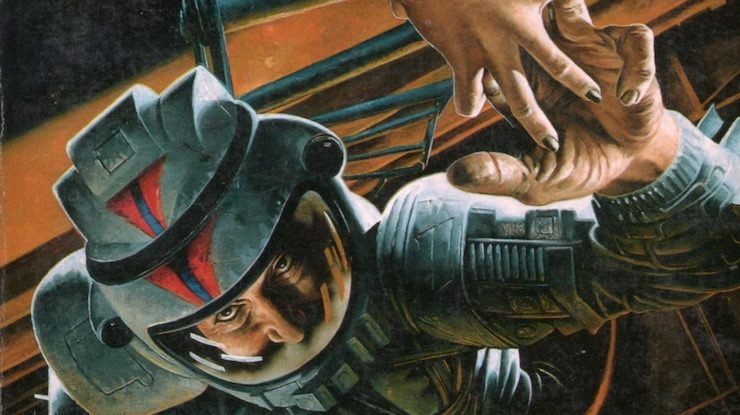We finished Ethan of Athos last week, so this week we’re starting Borders of Infinity—and we get to do BOOK COVERS!
This reread has an index, which you can consult if you feel like exploring previous books and chapters. Spoilers are welcome in the comments if they are relevant to the discussion at hand. Comments that question the value and dignity of individuals, or that deny anyone’s right to exist, are emphatically NOT welcome. Please take note.
Borders of Infinity consists of three novellas and a frame story. This leaves artists a lot of options to choose from. Their choices have tended to follow certain patterns. The first novella, “Mountains of Mourning” is not referenced in any covers I have seen. The NESFA Press edition features a scene from “Labyrinth,” and makes Jackson’s Whole look like the Valley of the Jolly Green Giant.
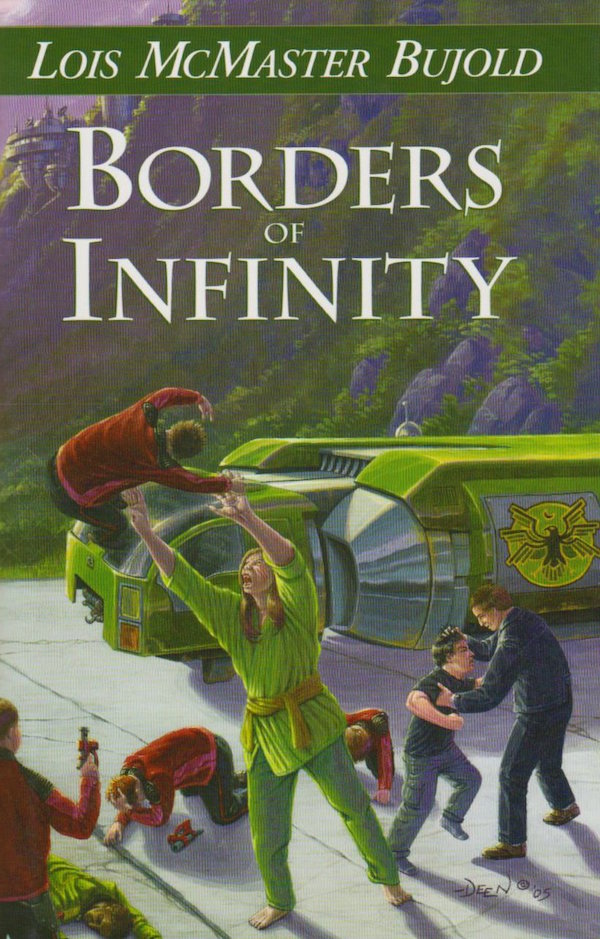
This may explain why the more usual approach has been to focus on “Borders of Infinity.” The original cover art by Gary Ruddell features a part of that incident that will haunt Miles for years to come—he will bring it up again in Komarr.
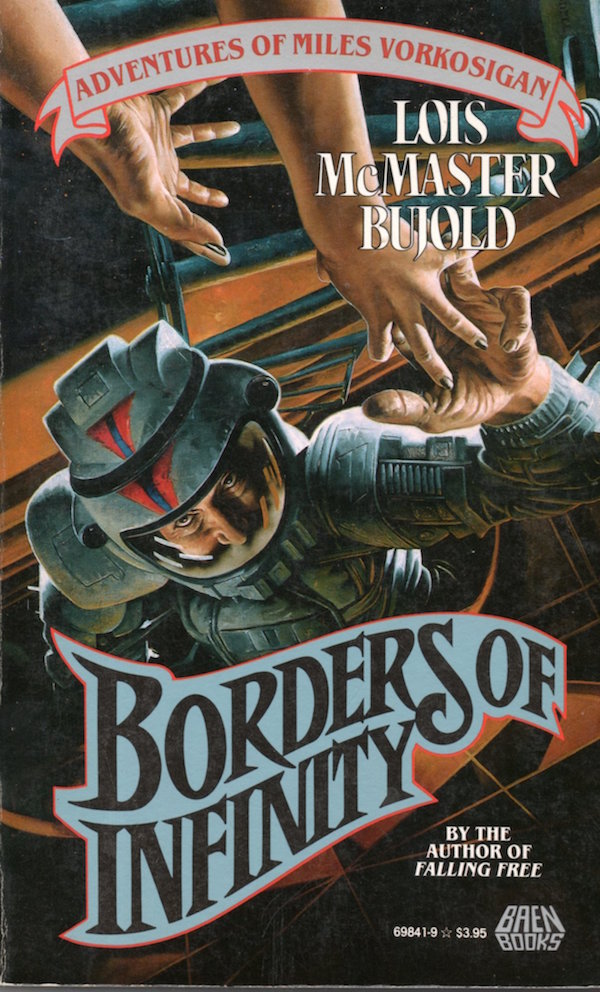
Some later reprints have covers that feature generic space-fighting imagery. I understand why a publisher might succumb to this impulse when publishing an anthology, but I think it’s a wasted opportunity—I would rather see a cover that says something about the book.
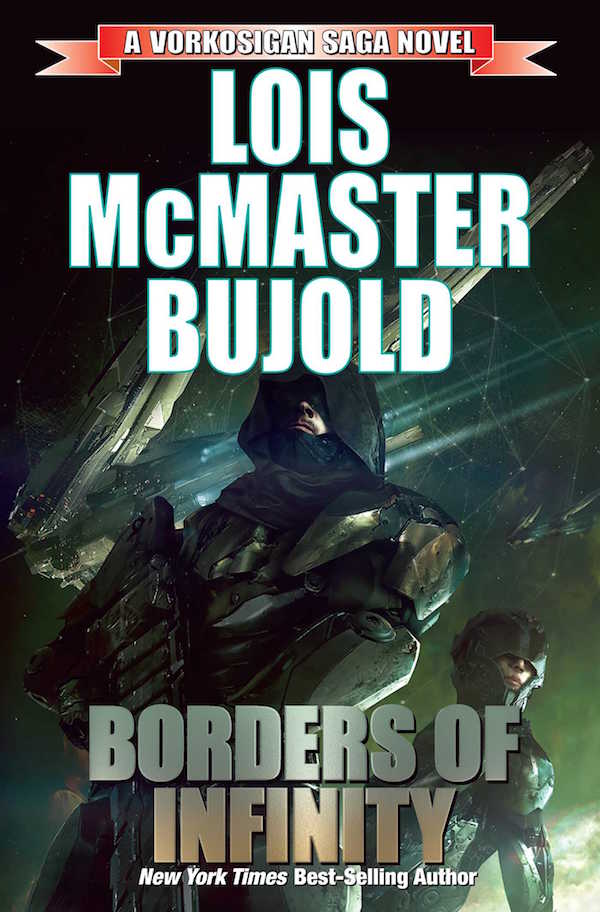
The Kindle edition offers a stark abstraction that I find very appealing, even though I think it’s overly simplistic.
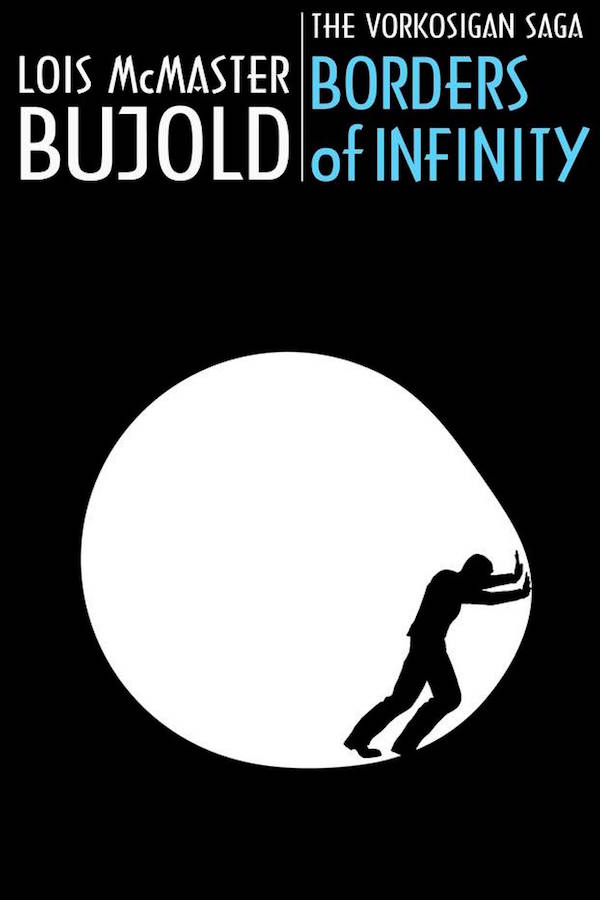
There’s nothing inherently WRONG with simplicity, but sometimes it turns out there are better options. Like this:
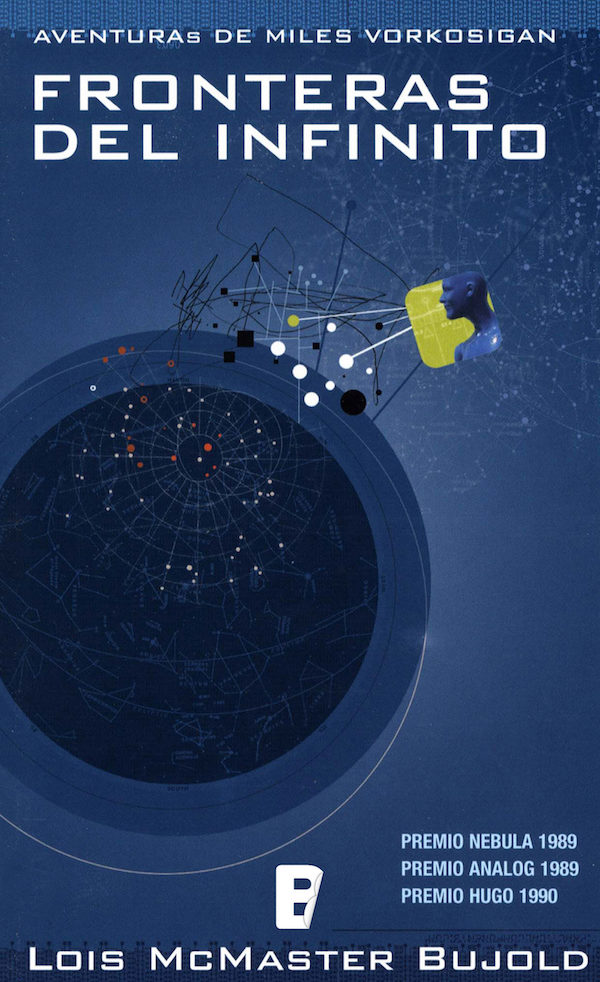
The blues draw me in, while the yellows create a chilly sense of discomfort. The details in the composition ask questions about the relationship between the narrative and the narrator, and honestly, if you don’t like it, I’m worried about you. Are you feeling OK? I want a poster-size version that I can unroll on my floor and peruse a few square inches at a time, and then I want to repaint my walls to complement it.
So what’s in the book?
Honestly, of the frame story, the less said the better. It involves Miles having surgery to replace the bones in his arms and Illyan taking advantage of his weakened state to ask some questions about charges of peculation that may be pending in the Council of Counts, a body whose antipathy towards Miles is evergreen. The frame story implies that I may have some books in the wrong order. I think Miles might be alluding to events that took place in Brothers in Arms in his conversation with Illyan. I know there is a vocal contingent of readers that thinks I should have reread “Mountains of Mourning” back before The Vor Game, so I’m going to take on Borders of Infinity now and apologize to anyone who finds that upsetting later.
Anyway, this frame story is batshit. Sorry about the language. Illyan is questioning Miles while he’s weak and in pain, which reflects a psychological theory on pain, mental impairment, and the ability to lie so ancient that it featured in Laurel Thatcher Ulrich’s The Midwife’s Tale. Oh, seventeenth century. Never get old. The premise is that Miles’s reminiscences will persuade Illyan that the Dendarii Mercenaries are Miles’s non-personal, non-private, totally legal army and not a money laundering scheme.
At this point, I suddenly realize how little time we really get to spend with the Dendarii Mercenaries, who have now appeared as a fighting force in only two of the seven books in the reread. They were ably represented by Elli Quinn in one additional book. They haven’t even been properly badass yet. We are just a few short books away from Miles getting killed and having to switch careers. I could stand to see more mercenaries. They could strangle Illyan! I liked him better when he was young. My antipathy here is not permanent—I will love Illyan again when his love affair moves into the open. But I don’t like his raison d’etre here, which is to do the Counts’ dirty work. I think he should do it in an open hearing with a subpoena, but the Barrayarans failed to invite me to their constitutional convention. Oh right! They haven’t had one. So Illyan can be his own little Court of the Star Chamber and then exonerate Miles on his personal authority as a result of having asked awkward questions of a guy who’s regrowing the bone marrow in his humeruses. Immunologically speaking, I think it’s pretty risky for Illyan to even be there.
“The Mountains of Mourning” is about infanticide. This is very serious, and very sad, and it didn’t feel right to do it for the day after Mother’s Day—the day itself is hard enough for some, belike. This week I’m just going to deal with the horse.
Fat Ninny is going to play a crucial role in the story, so it’s totally cool for me to spend quality time talking about what an awesome horse he is. Fat Ninny has the responsiveness of a highly trained dressage horse. When Miles twitches his reins, squeezes his left calf, and shifts his weight slightly, Fat Ninny collects himself, executes a precise half turn and backs up two steps. You can try this at home if you have a horse handy. Unless you’re very serious about your dressage training, nothing will happen. Maybe, if your horse is sensitive but not very well-trained, they’ll toss their head or put their ears back or something. Shout Out to the gaggle of girls from the village who keep Count Piotr’s horses exercised, because you can’t just go off to the Imperial Military Academy and come back to find your horse still that awesome. Someone has kept Fat Ninny in work, or he would be completely neurotic and also unable to hack into the Dendarii Mountains, and they did a good job. The late Count Piotr is responsible for Ninny’s name, as well as several aspects of his training. Miles loves Fat Ninny. So do I. If you are looking for a visual reference, I recommend googling Valegro and then imagining speckles. I also love Miles’s memory of Count Piotr’s riding-instructorly comments.
Count Piotr and Fat Ninny have important roles to play in this story, but it’s mostly about one tiny girl. Next week, I’ll be putting the spotlight on little Reina, her life, her village, and her mother.
Ellen Cheeseman-Meyer teaches history and reads a lot.










